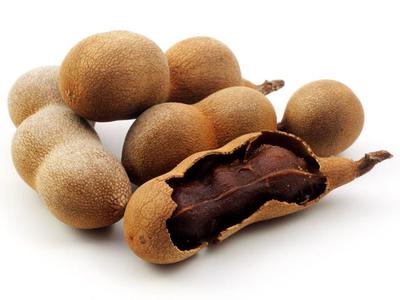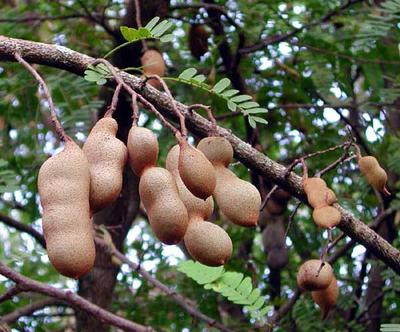VANILLA BEANS | SOYBEAN OIL | SOYA CAKE | COCOA BEANS | COFFEE BEANS
How to grow TAMARIND FRUITS in Uganda

Tamarind Fruits in Uganda
Tamarind (Scientific name: Tamarindus indica) is a large leguminous tree that grows to up to 3m tall.
Tamarind is indigenous to tropical Africa and here in Uganda we locally call it “Enkoge”. The tree is mainly grown for its indehiscent, sub-cylindrical brown pod fruits.
Tamarind (Tamarindus indica) is a leguminous tree in the family Fabaceae indigenous to tropical Africa. The genus Tamarindus is a monotypic taxon, having only a single species.
The tamarind tree produces pod-like fruit, which contain an edible pulp that is used in cuisines around the world.
Other uses of the pulp include traditional medicine and metal polish. The wood can be used for woodworking, and tamarind seed oil can be extracted from the seeds.
Common Tamarind varieties in Africa
There are mainly two tamarind varieties grown a cross the tropics and subtropics:
The sweet variety - this type is very much pronounced in Asian countries like Thailand and is grown on a large scale.
The sour variety - this is the commonest variety mainly here in Uganda though its production is rather dispersed than being commercial.
Contact us here to buy Tamarind fruits and Seedlings in Uganda
Soil requirements for growing Tamarind Trees
Tamarind tolerates a great diversity of soil types; therefore the tree has no special soil requirement.
However the tree cannot survive in water logged grounds.
When growing tamarind don’t care about soil pH levels, this tree can grow in a pH ranging from 4.5 up to 9.
How to propagate Tamarind on your farm
Tamarind can be started by using both seeds and other vegetative means like cuttings.
The seeds usually germinate within a week.
Seeds keep up their viability to sprout for several months provided you keep them dry.
Contact us here to buy Tamarind fruits and Seedlings in Uganda
How to plant Tamarind fruits in Africa
When you choose to start the tree from seeds, soak them overnight in warm water to speed up germination.
To plant fill up a mixture of sandy loam and compost in to polybag, then open up drills approximately 1-2 cm deep and then place in the seeds.
Water the sown seeds to provide moisture needed for germination.
At 18 months the seedlings shall be ready for transplanting to the Permanente growing site.
So dig holes twice the size of the root ball of the plant, incorporate in compost to enhance further growth.
Gently remove the plant from the polybag and cut dead or damaged roots, then place the seedling into the hole maintaining a spacing of 10-20m between trees.
Stake the seedling to protect it from other animals and even weed.
I would recommend that one obtains already established seedlings from reliable nursery operators because plants started from seeds don’t go into production until after 6-8 years after germination.
Contact us here to buy Tamarind fruits and Seedlings in Uganda
How best to harvest Tamarind Fruits in Uganda
Tamarind started from cuttings will start producing fruits in 3 - 4 years while that started from seeds will take a lapse of 6-8 years to fruit.
When mature, the indehiscent brown pods shall appear a little ashy. You can leave the fruits on the tree for as long as 6 months after maturity to enable them to dry.
To harvest, pull the pod away from the twig leaving a small inch of the stalk attached to the fruit.
Alternatively you can shake the branches to enable mature fruits to fall leaving the young ones to stay.
Contact us here to buy Tamarind fruits and Seedlings in Uganda
About the Uses and Market for Tamarind
Tamarind fruits are a rare fruit on markets since it’s not a fruit of importance amongst consumer.
However the fruits are sold by hawkers who move around with them in baskets.
Therefore often consumers can find the fruits in farmer markets; maybe there one can buy by impulse.
The fruit pulp is edible. The hard green pulp of a young fruit is considered by many to be too sour, but is often used as a component of savory dishes, as a pickling agent or as a means of making certain poisonous yams in Ghana safe for human consumption.
The ripened fruit is considered the more palatable, as it becomes sweeter and less sour (acidic) as it matures.
It is used in desserts, as a jam, blended into juices, or sweetened drinks, sorbets, ice creams and other snacks.
In Western cuisine, it is found in Worcestershire Sauce and HP Sauce.
In most parts of India, tamarind extract is used to flavor foods, in curries and traditional dishes, and tamarind sweet chutney is popular in India and Pakistan as a dressing for many snacks.
Tamarind pulp is a key ingredient in flavoring curries and rice in south Indian cuisine, as well as in the Chigali lollipop.
Across the Middle East, from the Levant to Iran, tamarind is used in savory dishes, notably meat-based stews, and often combined with dried fruits to achieve a sweet-sour tang.
In the Philippines, the whole fruit is used as an ingredient in the traditional dish called sinigang to add a unique sour taste, unlike that of dishes that use vinegar instead.
Contact us here to buy Tamarind fruits and Seedlings in Uganda
Quick tips for planting tamarind trees
- Clear up site meant for planting the tamarind tree.
- Dig up holes in the ground twice the seedlings root ball, maintain a spacing of 10-20 m between trees.
- Mix handfuls of compost with top soil to make a root base for the seedling.
- You can also enhance rooting by adding there inorganic DAP fertilizer in a ring form.
- Remove the seedling from the polybag and place it in the center of the hole.
- Gently cover with soil and a firm to remove air pockets.
- Water as regularly as possible to avoid water shock, because the seedling is just adapting to the ground.
- Stake the seedling to protect it from animals.
- Harvest your tamarind in about 3-4 years for cuttings and more years for those started with seeds.
Contact us here to buy Tamarind fruits and Seedlings in Uganda
Join in and write your own page! It's easy to do. How? Simply click here to return to Plants Guide.
If you haven't yet found what you were looking for or you need detailed information about the subject matter on this page then... feel free to ask our business travel consultants. |







